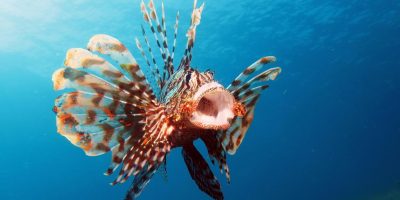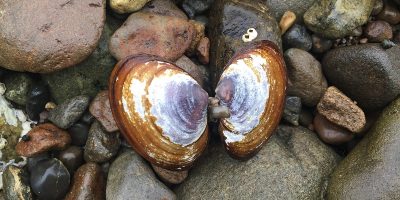By Kirsten Calvert, Aquatic and Fishery Sciences undergraduate
Marine protected areas, or MPAs, are becoming an increasingly popular option for conservation and management of marine species and ecosystems.
What is an MPA?
There are several different types of MPAs, with different goals and strategies in place, but a simple definition can be described as “a marine sanctuary, estuary reserve, ocean park, or wildlife refuge to protect ecosystems, sustain fisheries production, or preserve cultural resources.” Based on this definition, there is still a lot of debate on what an MPA actually is. Some people believe MPAs are closed to all human interaction, including fishing, snorkeling, boating, and any other human use. Others believe in a looser definition, such as areas set aside specifically for recreation, such as the Florida Keys National Marine Sanctuary. Technically, both definitions of marine protected area are correct. There is a wide range of what constitutes an MPA, making management of these areas difficult to maintain.
Globally, marine protected areas cover about 6.35% of the ocean, a tenfold increase since 2000. It is clear that there is a trend to establish more MPAs around the world’s oceans, mainly to prevent or decrease impacts of overfishing and global climate change. Since MPAs are becoming so popular in management for marine conservation, there should be a review of the efficacy of different MPAs, and whether conservation targets are being met.

Credit: International Union for Conservation of Nature, 2017
Coral reef MPAs

Areas that were unregulated showed a decrease in coral coverage over one year, while areas within a regulated MPA showed an increase in coral cover (Selig and Bruno 2010)
Selig and Bruno 2010 found that MPAs were useful for maintaining coral cover, and the benefits of MPAs increase with the number of years since establishment. While this study is promising for MPA supporters, Mora et al. 2006 found that smaller MPAs didn’t allow for dispersal of coral reef fishes, and large target species were caught by fishermen as they spilled over into unprotected regions. These losses in turn triggered negative indirect effects on the resiliency of the coral reefs. Essentially, the efficacy of MPAs varies based on management quality and size of the MPA, with only a handful of MPAs worldwide large enough for efficient protection of corals.
Fisheries MPAs
There are mountains of strong empirical evidence that support the positive effects of MPAs on fish populations within a reserve, however there is little evidence of the enhancement of fisheries. A study by Roberts et al. 2001 determined that biomass of 5 commercially important fishes adjacent to the Soufrière Marine Management Area along the island of St. Lucia doubled in 3 years . With fishing effort steady throughout the 5-year study period, the authors interviewed the fisherman every year to determine the impacts on the subsistence fishery. They found that in the first year there was a decrease in the amount of available catch, but as time went on more fish were available, and the size of the fish was also increased. In the same study, the authors also looked at the Merritt Island National Wildlife Refuge at Cape Canaveral, Florida. They found that the closed site used for the protection of the Kennedy Space Center benefitted several game fish species both in biomass and average size per fish. Overall, the synthesis from Roberts et al. (2001) shows that the reserves generated enhanced recreational and subsistence fisheries, especially the longer the area was protected.
Bottom Line on MPAs
In a well-known paper by Edgar et al. 2014, the five key features of an effective MPA are described as: no take, well enforced, old (over 10 years), large (greater than 100km2), and isolated by deep water or sand. The authors looked at the conservation benefits of 87 different MPAs worldwide, and found that only 4 had all 5 of the features, 5 had 4 features, 39 had 3 features, and 57 and 16 MPAs had 2 and 1 features, respectively. These results are surprising, as they show that only 10% of the MPAs were effective. To meet the target goals of the Marine Conservation Institute in protecting 30% of the ocean by 2030 using MPAs, understanding what makes an effective MPA is essential to improve effectiveness and reach conservation goals.
Personally, I think marine protected areas are a good start to meeting target conservation goals, but I think they should not be held accountable for reestablishing a diminished population, or for complete protection of a natural site. MPAs do not hold all the answers, nor do they solve all conservation problems, but I think they can help to lessen some of the impacts of anthropogenic activities like overfishing, coastal development, pollution, etc. I also think MPAs are an important tool for human curiosity and entertainment. The social aspect of MPAs, such as tourism, recreational fishing, and wildlife viewing is important to keep people engaged and infatuated with nature. The scientific aspect of MPAs as “living laboratories” is important for research and maintaining healthy ecosystems. I don’t think MPAs are a bad thing. If they are established and regulated correctly, I think they can have a positive outcome, and can reach their conservation goals.
Further Reading
National Marine Sanctuary, National Ocean and Atmospheric Administration. “About Florida Keys National Marine Sanctuary” 22, Mar. 2011 https://floridakeys.noaa.gov/about/welcome.html?s=about
MacSharry, Brian. “Global Shift in Marine Protected Area Analysis and Reporting.” IUCN, 7 Sept. 2017, www.iucn.org/news/protected-areas/201709/global-shift-marine-protected-area-analysis-and-reporting.
Mora, C. et al. (2006) “ECOLOGY: Enhanced: Coral Reefs and the Global Network of Marine Protected Areas.” Science, vol. 312, no. 5781, pp. 1750–1751., doi:10.1126/science.1125295
Selig, Elizabeth R., and John F. Bruno (2010) “A Global Analysis of the Effectiveness of Marine Protected Areas in Preventing Coral Loss.” PLoS ONE, vol. 5, no. 2, doi:10.1371/journal.pone.0009278.
Roberts, C. et al. (2001) “Effects of Marine Reserves on Adjacent Fisheries.” Science, vol. 294, no. 5548, pp. 1920–1923., doi:10.1126/science.294.5548.1920.
US Department of Commerce, National Oceanic and Atmospheric Administration. “What Is a Marine Protected Area?” NOAA’s National Ocean Service, 1 June 2013, https://oceanservice.noaa.gov/facts/mpa.html






Leave a Reply